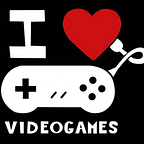How to get started with Unity!
Installing Unity !
Go to Unity’s download page and select the download Unity Hub option.
This will download a “UnityHubSetup.dmg” file. Open the downloaded .dmg installer file. You will see a screen like this.
Accept the Unity Terms of Service and proceed. Upon completion you’ll see the following, move Unity Hub into the application folder to complete the installation process.
Now you’ll find Unity Hub in your Applications. Upon opening Unity hub you might get a confirmation message saying Unity Hub is an app downloaded from the internet, click open to “open Unity Hub”.
You will now want to login/sign up to your unity account in-order to continue with the process and install the Unity Engine.
Now that you’re all signed in you can now begin with installing Unity. To do so select the blue “ADD” button on the top right corner of your screen. This will take you to an “Add Unity Version” screen where you can select a version of unity.
The preferred version to select is “LTS Version”(Long Term Support) as it is the most stable. But you can also go with the latest version available to gain access to the latest features. After this step you’ll now have to pick the modules you want like platform, languages etc. (platforms missed can be added into the project at a later point of time too). Once that’s done, all you have to do is wait for the installation to complete.
Creating a new project with Unity !
In your Unity Hub go to the Projects section if you’re not on it, once there click on the blue “NEW” button. This brings up a new window where you can select a template that will highlight the kind of project you’re creating. To start of with, I will select the 2D template. Upon selecting the template you can now name and select a location for the project. Click the “CREATE” button to create and open your project.
And if everything goes as planned you will see a screen as shown below.
Unity Editor !
This is where the magic happens. This is also probably where you’ll spend most of your time building your projects. When you first open your editor you’ll be greeted with a lot of empty panels while not knowing what half of them are. So lets breakdown each of these panels.
Panel 1 :
Scene view, this window is where majority of your work will be done, it is here where you’ll drop your game objects, build applications, environments. It’s literally a place where one can drop anything needed to create their world, it’s basically the place where you bring your vision to life.
Panel 2 :
Hierarchy view, this window contains everything that has been placed in the scene view, in this case you see a main camera which is the only object placed in your scene. Every item in the scene is automatically entered in the Hierarchy panel, thats how you can say that the two windows are linked. It is here where you can create a structure of interlinking objects.
Panel 3 :
Project view, this window contains all your assets ranging from 3D models, 2D models, audio files, textures to scripts. So basically anything that is required to make up your project you can find it here. Any asset imported can be found here.
Panel 4 :
Inspector view, this window not only contains all the information regarding the selected game object but it also allows you to change its properties. It’s important to know that the properties of the inspector window are bound to change depending on the type of game object selected.
Panel 5 :
Game View, this window renders everything in the scene view from the perspective of the main camera. This simulates what your final product will look like, it is here where most of the play testing takes place.
Panel 6 :
Asset Store, as the name suggests this window is a place where you can buy assets (free or at a premium) and import it into the project.
Panel 7 :
Console, this window shows you errors, warnings and unity generated messages it can also be used by developers to debug code.
Preferred Unity Layout !
Everyone has their preferences, many people choose to stick with the default layout and others choose a layout that seems comfortable to them. You can rearrange the layout by moving the respective panels to your desired position. The layout shown below is my personal preference.
On the top right corner of your screen you should see a “Layout” dropdown and selecting the “Tall” option will bring up the layout as shown below
Now select “Window” from the tool bar then select “General” from the drop down and click on “Console”.
From the “Project” panel select the three dot icon and select the “One Column Layout”.
Now in the top right corner above the Inspector panel select “Tall” and click on “Save Layout” to save your custom Layout. In case you accidentally move or remove a panel you can now revert back to this layout by reselecting your Saved Layout.
With this done we can finally start working on integrating GIT with Unity.
